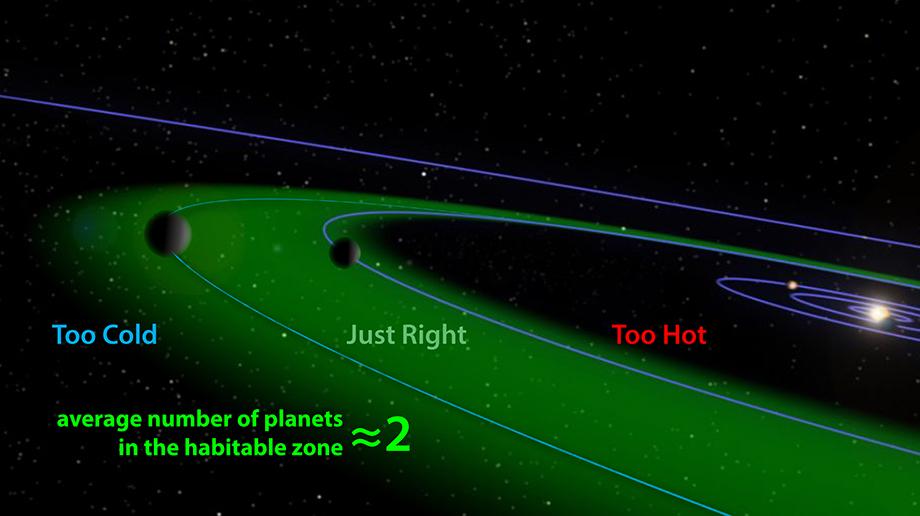Scientists predict Earth-like planets around most stars
February 5, 2015

Welcome to the Goldilocks zone, where liquid water can exist (credit: Aditya Chopra, ANU, adapted from NASA/JPL)
Planetary scientists have calculated that there are hundreds of billions of Earth-like planets in our galaxy which might support life.
The new research, led by PhD student Tim Bovaird and Associate Professor Charley Lineweaver from The Australian National University (ANU), made the finding by applying a 200 year old idea called the Titius-Bode relation — used to predict the existence of Uranus — plus Kepler data to the thousands of exo-planets discovered by the Kepler space telescope.
That allowed them to predict the positions of planets that Kepler is unable to see, and found the standard star has about two planets in the “Goldilocks zone” — the distance from the star where liquid water, crucial for life, can exist.
“The ingredients for life are plentiful, and we now know that habitable environments are plentiful,” said Lineweaver, from the ANU Research School of Astronomy and Astrophysics and the Research School of Earth Sciences.
“However, the universe is not teeming with aliens with human-like intelligence that can build radio telescopes and space ships. Otherwise we would have seen or heard from them. It could be that there is some other bottleneck for the emergence of life that we haven’t worked out yet. Or intelligent civilisations evolve, but then self-destruct.”
The Kepler space telescope is biased towards seeing planets very close to their stars, that are too hot for liquid water, but the team extrapolated from Kepler’s results using the theory.
The research is published online in Monthly Notices of the Royal Astronomical Society.
Abstract of Using the inclinations of Kepler systems to prioritize new Titius-Bode-based exoplanet predictions
We analyze a sample of multiple-exoplanet systems which contain at least 3 transiting planets detected by the Kepler mission (“Kepler multiples”). We use a generalized Titius-Bode relation to predict the periods of 228 additional planets in 151 of these Kepler multiples. These Titius-Bode-based predictions suggest that there are, on average, ~2 planets in the habitable zone of each star. We estimate the inclination of the invariable plane for each system and prioritize our planet predictions by their geometric probability to transit. We highlight a short list of 77 predicted planets in 40 systems with a high geometric probability to transit, resulting in an expected detection rate of ~15%, ~3 times higher than the detection rate of our previous Titius-Bode-based predictions.